Meet the Stadtmans
Neat, Sweet, Unique
Trans-NIH Recruiting Effort Brings in 11 Investigators
Luca Gattinoni (NCI) took his “first steps into science” as a toddler in the NIH Child Care Center when his parents were Visiting Fellows at NIH. Physicist Kandice Tanner (NCI) is drawn to motion, whether it’s from tumor cells migrating into new tissues or her own body hurtling through space while she’s skydiving. Developmental biologist Todd Macfarlan (NICHD) is intrigued with how viruses “are so intimately intertwined with our own evolution as a species.”
Indeed, all 11 members of the 2011–2012 cycle of Earl Stadtman Tenure-Track Investigators have a story to tell. They join 17 others in the Stadtman program—named for the legendary biochemist who worked at NIH for 50 years—that was launched in 2009 as an NIH-wide recruiting effort to attract outstanding scientists whose research areas span the biomedical fields.
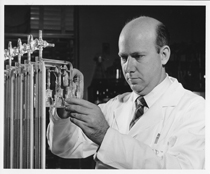
OFFICE OF NIH HISTORY
Earl Stadtman (1919–2008) mentored and inspired countless researchers including two who went on to become Nobel laureates—Michael Brown and Stanley Prusiner—and others who were later elected to the National Academy of Sciences. Undoubtedly he would have loved to mentor the Stadtman Investigators, too.
And to continue with the introductions… RNA biology is “very exciting” to Stavroula (Voula) Mili (NCI), who studies cancer and neurodegeneration. Sunni Mumford (NICHD) is investigating how lifestyle and dietary changes may improve male and female reproduction and fertility. When she’s not trying to figure out the neuronal basis of natural behaviors, Yeka Aponte (NIDA) is preparing elaborate meals for her friends. Eye researcher Kapil Bharti (NEI) had dreamed all his life about becoming a scientist and doing something that mattered. Structural biologist Audray Harris (NIAID) plans to leverage his research on respiratory viruses to design better vaccines. “The elegant yet complex nature of the biological systems around us never ceases to amaze” Quan Yuan (NINDS). Both Lucy Forrest (NINDS) and Anirban Banerjee (NICHD) study proteins in cell membranes. Forrest uses computational and theoretical approaches to study transporter proteins. Banerjee is “convinced that NIH was, without a speck of doubt, the best place to” do his research on the connection between the structure and function of eukaryotic integral membrane proteins.
All the Stadtman Investigators agree that NIH is the best place to be. The following is a synopsis of who the new Stadtmans are.
YEXICA (YEKA) APONTE, PH.D., NIDA
Earl Stadtman Tenure-Track Investigator; Unit Chief, Neuronal Circuits and Behavior Unit, Cellular Neurobiology Branch

Education: undergraduate studies in biology, Universidad Central de Venezuela (Caracas, Venezuela); Ph.D. in natural sciences at the Albert Ludwig University of Freiburg (Freiburg im Breisgau, Germany)
Training: Postdoctoral training at Janelia Farm Research Campus, Howard Hughes Medical Institute (Ashburn, Va.)
Web site: http://irp.drugabuse.gov/Aponte.php
Interviewed by: Laura Stephenson Carter
Current research: We are using state-of-the-art optogenetic electrophysiology, two-photon fluorescence endoscopy, and behavioral assays to elucidate the neuronal basis of natural behaviors, such as feeding, and determine how these behaviors are disrupted in eating disorders and drug addiction. We are measuring and manipulating genetically defined cell types in mice to identify key elements of the feeding-reward circuits. Our emphasis is on identifying brain regions and circuit-level mechanisms underlying the rewarding nature of food intake and drug abuse. By understanding these mechanisms, we hope to enhance our ability to battle disorders such as obesity, addiction, diabetes, bulimia, and anorexia.
What are the advantages to working in NIH’s IRP?
The NIH IRP allows us to study the most challenging problems in neuroscience research without the burden of applying [to] funding sources. This period of stable support is vital for performing cutting-edge research and enables us to pursue long-term projects of high significance. A further benefit of the program is that it attracts scientists with incredibly diverse backgrounds and experiences.
What was your previous research? Any significant findings?
I used optogenetics techniques to study the neuronal circuits controlling feeding behavior in mice. We found that the activation of AGRP [agouti-related peptide] and POMC [pro-opiomelanocortin] neuron classes in the hypothalamus can trigger and inhibit feeding, respectively.
How did you get interested in your field?
In high school, I had an extraordinary biology teacher who thought that I could become an excellent genetic engineer because of my eagerness for learning genetics and molecular biology. But in college, while taking a course called “Biophysics and Physiology on Excitable Membranes,” I developed a passion for neuroscience. During graduate school, I was determined to understand how the brain works. My postdoctoral research strengthened my thirst for understanding how neurons communicate in brain networks to drive natural behaviors.
Is there anything else you would like us to know about you?
When I’m not in the lab, I love to spoil my closest friends by preparing incredibly elaborate meals. I strongly believe that cooking is an art and is also as challenging as performing experiments in the lab.
ANIRBAN BANERJEE, PH.D., NICHD
Earl Stadtman Tenure-Track Investigator, Unit on Structural and Chemical Biology of Membrane Proteins, Cell Biology and Metabolism Program

Education: B.Sc. in chemistry, Jadavpur University (Calcutta, India); M.Sc. in chemistry, Indian Institute of Technology, Kanpur (India); Ph.D. in chemistry, Harvard University (Cambridge, Mass.)
Training: Postdoctoral training at Rockefeller University (New York)
Web site: https://science.nichd.nih.gov/confluence/display/banerjee/Home
Interviewed by: Laura Stephenson Carter
Current research: I am interested in the connection between the structural chemistry and biological function of eukaryotic integral membrane proteins, which are underrepresented in the database of deposited protein structures. My lab combines X-ray crystallography, protein and peptide chemistry, and solution biochemical and biophysical techniques with detergent-solubilized proteins and reconstituted proteoliposomes. As a continuation of my postdoctoral work, we are pursuing studies on the interactions of potassium (K+) channels with components of animal venom. We have also started working on membrane-embedded enzymes and integral membrane proteins that transport metal ions across membranes.
What attracted you to the NIH IRP?
The scientific community here is outstanding, and I have found it easy to approach scientists and interact with them. It’s rare to have such a tremendous amount of resources (equipment and techniques) shared among the different labs. My lab has already started collaborating with labs in NIDDK and NIAID. Although I do basic-science research, I like being close to a clinical-research program. I hope that eventually we will find an intersection of my lab’s research with one of the clinically oriented labs on campus. I also like being able to devote my time to research without having to worry about administrative responsibilities. NIH, being the hub of science funding and grant reviewing, gets a stunning array of scientists as visitors and speakers, which is important to us since we usually spend less time traveling yet would like to stay in touch with the community and the cutting-edge research advances. Not being under the pressure of writing grants immediately has enabled me to pursue research in novel directions that would have been impossible elsewhere. Last but not the least, the Bethesda area is very international and has a great mix of people from all around the world. It’s comfortable to settle here after our move from New York City.
What was your previous research? Any significant findings?
In my graduate thesis, my work led to the first insights into the mechanism of interrogation and substrate discrimination by DNA glycosylases, a class of DNA-repair enzymes that locate and discriminate rare sites of damage amongst millions of normal base pairs in DNA. In my postdoctoral research, I focused on voltage-dependent potassium (K+) channels. The opening and closing of these channels is an essential component of electrochemical signaling in the nervous system. I used a number of techniques including protein chemistry, ion-channel reconstitution, electrophysiology, and bioinformatic analysis to investigate the nature of conformational changes in voltage-dependent channels. Later I concentrated on investigating the interaction of K+ channels with peptide toxins from animal venom using X-ray crystallography and peptide chemistry. This resulted in the first crystal structure of a K+ channel in complex with a pore-blocking toxin.
How did you get interested in science and your field?
I owe it to a few teachers in school and college who aroused my curiosity in chemistry and then pushed me to explore on my own. My interest in chemical biology was kindled by a course I took as a Master’s student. When I was a graduate student, I got excited by structural biology and how it led to the chemical understanding of macromolecules. I got into my current field of membrane proteins during my postdoctoral training in the of lab Roderick MacKinnon, an electrophysiologist and self-taught crystallographer who shared the Nobel Prize in Chemistry in 2003 for his pioneering contributions to elucidating the structure and operation of ion channels.
Is there anything else you would like us to know about you?
I mostly divide my time between my “infant lab” and my family (my wife and my two sons, one 4.5 years and the other 1.5 years old). I also listen to North Indian classical music and collect concert recordings of a few of my favorite artists.
KAPIL BHARTI, PH.D., NEI
Earl Stadtman Tenure-Track Investigator; Chief, Ocular Stem Cell and Translational Research Unit

Education: B.Sc. in biophysics, Panjab University (Chandigarh, India); M.Sc. in biotechnology, Maharaja Sayaji Rao University (Baroda, India); Ph.D. in molecular cell biology, Johann Wolfgang Goethe University (Frankfurt am Main, Germany)
Training: Research fellow, Mammalian Development Section, NINDS
Last position held: Staff scientist, Mammalian Development Section, NINDS
Web site: https://irp.nih.gov/pi/kapil-bharti
Interviewed by: Laura Stephenson Carter
Current research: My current work is a direct translational application of my previous work done in mouse models. I used my experience and knowledge in retinal pigment epithelium (RPE) differentiation to improve existing protocols to differentiate RPE cells from human induced pluripotent stem (iPS) cells in vitro. The RPE is a monolayer of cells located in the back of eye adjacent to retinal photoreceptors. By culturing these RPE cells on biodegradable scaffolds, we were able to develop functional RPE tissue. We have just begun preparing for a clinical trial, to be launched in 2018, that will use an autologous cell therapy for patients with retinal degenerative diseases. In addition, we have developed iPS cells from patients with retinal degenerative diseases. Currently, we are using RPE derived from these patient-specific iPS cells to identify pathways involved in these retinal degenerative diseases. We are collaborating with NCATS to use high-throughput screening methods to target these pathways to identify drugs that can be used as potential therapeutics in patients with retinal degenerations. We are also performing genome-wide RNA [interference] screens to identify pathways involved in maintaining epithelial phenotype in RPE cells.
What are the advantages to working in NIH’s IRP?
In addition to its diverse and rich scientific culture and friendly people who are always ready to collaborate and help, the IRP has the Clinical Center, the Center for Regenerative Medicine, and NCATS as valuable resources that make it possible to develop translational and clinical applications of my work. One of the biggest advantages of working here is being able to be closely associated with patients and work on patient samples. Another advantage is that NEI has an outstanding team of eye researchers. It is so humbling to learn from them about various aspects of eye physiology, genetics, and biology.
What was your previous research? Any significant findings?
I worked on the biology and genetics of embryonic eye development, in particular, how the RPE develops in vertebrates. I developed and analyzed mouse models containing mutations in the transcription factors MITF [microphthalmia-associated transcription factor] and PAX6 [paired box protein 6], which are critical for early eye development. I demonstrated, in mice, that the co-expression of these two transcription factors in progenitor cells of the eye is required for RPE development. I also demonstrated a feedback loop between the WNT [wingless-related integration site] pathway and these two transcription factors in regulating RPE differentiation. This work defined a critical step in differentiation of eye progenitor cells into RPE and the neuroretina.
How did you get interested in science and your field?
My mother was a science teacher. As a kid, I spent hours looking through the microscope during summer breaks in her school’s science lab. In my middle and high schools, I participated in every science fair. When I was a staff scientist at NINDS, I got interested in stem-cell biology and its clinical applications when several publications came out around 2009 on RPE differentiation from pluripotent stem cells. I realized that I could contribute to this field using the knowledge I had gained using mouse models.
Is there anything else you would like us to know about you?
There is not a single thing I wanted more in my life then to become a scientist and do something that mattered. Working in the IRP is a dream come true. I like to spend my spare time playing with my seven-year-old daughter and my two-year-old son and taking them for hikes in the Great Falls area. When I have time, I also like to jog—it is relaxing.
LUCY FORREST, PH.D., NINDS (UNAVAILABLE FOR AN INTERVIEW)
Earl Stadtman Tenure-Track Investigator, Computational Structural Biology Unit

Education: B.Sc. in computer-aided chemistry, University of Surrey (Guildford, England); D.Phil. in biochemistry, University of Oxford (Oxford, England)
Training: Postdoctoral research at the Johns Hopkins University School of Medicine (Baltimore), Medical Research Council Dunn Human Nutrition Unit (Cambridge, UK), and Columbia University (New York)
Position before coming to NIH: Max Planck Research Group Leader, Max Planck Institute for Biophysics (Frankfurt, Germany)
Web site: http://intra.ninds.nih.gov/Lab.asp?Org_ID=585
Current Research: Membrane-embedded proteins are essential components of cells, allowing them to communicate with their surroundings by providing bridges through the barrier of the lipid membrane. Our group uses computational and theoretical approaches to understand how membrane proteins work. Of particular interest are transporter proteins, which capture the chemical potential energy of ionic gradients (across the membrane) to facilitate movement of essential chemicals, or unwelcome toxic compounds, into and out of the cell. A fundamental question is how transporters achieve the required degree of specificity for a given chemical, or substrate, and how the protein-substrate interaction is coupled to transport of ions such as sodium. A further puzzle is how the transporter undergoes the requisite changes in shape to allow access of the substrate binding sites to either side of the membrane, while also preventing leakage. An essential characteristic of our work is to test our hypotheses and interpretations by experimental evidence. An aspect we find particularly fascinating is the role of repeated elements in the mechanisms of transport conformational change, which provide an elegant pseudo-symmetry and degeneracy to the system so that a single protein can adopt two pseudo-symmetric states. We apply a range of computational tools to understand these processes at atomic detail. To date, those techniques include sequence analysis, continuum electrostatics, structure prediction, and molecular dynamics simulation, tools for which we develop in-house.
LUCA GATTINONI, M.D., NCI-CCR
Earl Stadtman Tenure-Track Investigator, Experimental Transplantation and Immunology Branch
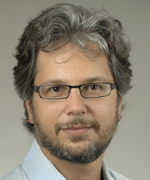
Education: GCE A-level, Liceo Classico G. Carducci (Milan); M.D., School of Medicine and Surgery, Università degli Studi di Milano (Milan)
Training: Residency in medical oncology, Università degli Studi di Milano and the Istituto Scientifico H.S. Raffaele (Milan)
Last position held: Staff scientist, Surgery Branch, NCI
Web site: http://ccr.cancer.gov/staff/staff.asp?profileid=7289
Interviewed by: Rebecca Baker, NIAID
Current research: I am planning to uncover the molecular and metabolic mechanisms that regulate CD8+ T-cell self-renewal and multipotency and use this knowledge to improve the effectiveness of T-cell-based immunotherapies by conferring “stemness” on tumor-specific CD8+ T cells.
What are the advantages to working in NIH’s IRP?
I received my medical training in Milan, Italy, but I “grew up” scientifically inside the NIH-intramural research program. I learned that an open, collaborative, and academic environment was a key component for achieving my research goals. An advantage of conducting my research within the NIH Clinical Research Center is the possibility of rapidly translating basic scientific findings into new therapeutic interventions for patients with advanced cancer.
What was your previous research? Any significant findings?
In the past few years, I made several contributions that have helped to shape our understanding of how the differentiation state affects the ability of CD8+ T cells to destroy tumors in vivo upon adoptive transfer. Perhaps the most important contribution is the identification of a new class of memory T cells endowed with stem-cell-like behavior (TSCM cells) in mice (Nat Med 15:808-183, 2009) and in humans (Nat Med 17:1290-1297, 2011). Like stem cells, these T cells are unique among all other lymphocytes in their capacity to self-renew while also giving rise to more differentiated progeny. These properties allow T cells to generate a fresh army of frontal fighters (the more differentiated cells) in case of an attack from a pathogen or cancer while at the same time maintaining a continuous supply of youthful recruits in the rear (the stem-cell-like population).
How did you get interested in your field?
My training in medical oncology has made it clear to me just how limited current oncologic medicine is [in] treating metastatic cancer. In an effort to develop curative options for patients, I have developed research expertise in the translation of basic immunology into new medical treatments.
Is there anything else you would like us to know about you?
My parents were NIH visiting fellows in the 1970s, and at the age of two to four, I was taking my first steps into “science” at the NIH Child Care Center.
AUDRAY KENKAY HARRIS, PH.D., NIAID
Earl Stadtman Tenure-Track Investigator; Unit Chief, Structural Informatics Unit, Laboratory of Infectious Diseases
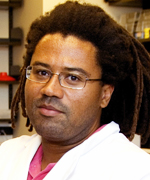
Education: B.S. in chemistry, Tougaloo College (Tougaloo, Miss.); Ph.D. in microbiology, University of Alabama at Birmingham (graduate of the Pharmaceutical Design Training Program)
Training: Postdoctoral training, NIAMS
Last position held: Research Fellow, Laboratory of Cell Biology, NCI
Web site: http://1.usa.gov/1efc74y
Interviewed by: Laura Stephenson Carter
Current Research: My lab integrates structural and biochemical studies with bioinformatics to understand the epitope display and assembly of respiratory viruses, especially the influenza virus. We use 3-D [three-dimensional] electron microscopy to obtain structural information. We hope to leverage this information to design better vaccines and to identify novel targets for therapeutic drugs.
What are the advantages to working in NIH’s IRP?
One advantage of the IRP is the ability to interact with other investigators who have diverse research interests and skills. I was attracted to NIH by the high quality of basic scientific research and by the number of viable health-care treatments that have been developed here. For example, NIAID’s Laboratory of Infectious Diseases researched and facilitated the development of nasal influenza vaccines that matured into FluMist [live attenuated influenza vaccine, LAIV].
What was your previous research? Any significant findings?
I was studying the structure of HIV [human immunodeficiency virus] and influenza glycoproteins. Significant findings, using cryo-electron microscopic techniques, included the first 3-D structures of influenza viruses and some of the first 3-D structures of HIV glycoproteins. Because these viral glycoproteins are the target of neutralizing antibodies, my work has implications for developing HIV and universal influenza vaccines.
How did you get interested in your field?
I was an undergraduate summer intern in a lab at Harvard Medical School where I was working closely with a researcher on poliovirus structure.
Is there anything else you’d like us to know about you?
I enjoy being in the Washington, D.C., area, and I enjoy the arts, particularly opera and ballet.
TODD MACFARLAN, PH.D., NICHD
Earl Stadtman Tenure-Track Investigator; Head, Unit on Mammalian Epigenome Reprogramming, Program on Genomics of Differentiation
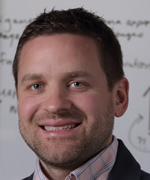
Education: B.S. in biochemistry and molecular biology, Pennsylvania State University (State College, Pa.); Ph.D. in cell and molecular biology, Perelman School of Medicine at the University of Pennsylvania (Philadelphia)
Training: Postdoctoral training, Gene Expression Laboratory, Salk Institute (La Jolla, Calif.)
Web site: https://irp.nih.gov/pi/todd-macfarlan
Interviewed by: Rebecca Baker, NIAID
Current research: My group is studying the function of chromatin-modifying enzymes in mammalian development; the interplay of transcription factors and chromatin-modifying enzymes during natural and artificial reprogramming; and the mechanisms that regulate endogenous retrovirus expression during development.
What are the advantages to working in NIH’s IRP?
I have more time to devote to thinking about science, doing science, and enjoying science. The IRP gives me the flexibility to spend more time at the bench and to mentor trainees. The direct funding of my research is also very attractive, particularly in the current funding environment. I made the decision to come to NIH because NICHD saw the promise in my research, made me feel as if I was doing groundbreaking work, and gave me an attractive offer.
What was your previous research? Any significant findings?
I consider myself a developmental biologist and am interested in how epigenetic information helps to control gene expression and cell-fate choices in embryo development. While I was a postdoc I studied the function of the histone demethylase LSD1 [lysine-specific demethylase 1] and was surprised to find that this transcriptional repressive enzyme played an important role in keeping retroviruses embedded in the genome silent during embryo development. I showed that the regulatory information of these same viral elements (the viral promoters within the long terminal repeats or LTRs), present in thousands of copies in the genome, were coordinating the expression of hundreds of genes that controlled embryonic potency in early mammalian development. These results highlighted the important regulatory function that viruses have played in the evolution of mammals.
How did you get interested in science and your field?
When I was very young, my dad used to read to my brothers and me a book about how humans evolved from early life forms. Darwinian evolution made so much sense to me, even at a young age. (Is it that hard to believe we evolved from other primates? Just look at the similarities!) It is still shocking to me that so many people would prefer to believe in fairy tales than in scientific evidence for evolution. And now it is satisfying to be studying how mobile genetic parasites (viruses) are so intimately intertwined with our own evolution as a species.
Is there anything else you would like us to know about you?
The things that matter the most to me are my wife (Christa) and two kids (Ellie, [age] four, and Ian, one), my science, and Philadelphia sports teams (when I have time), in that order.
STAVROULA (VOULA) MILI, PH.D., NCI-CCR
Earl Stadtman Tenure-Track Investigator, Laboratory of Cellular and Molecular Biology
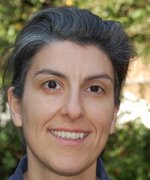
Education: B.Sc. in biology, National and Kapodistrian University (Athens, Greece); Ph.D. and M.Phil. in biomedical sciences, Mount Sinai School of Medicine of New York University (New York)
Training: Postdoctoral training, Yale University (New Haven, Conn.)
Last position: Research associate, University of Virginia (Charlottesville, Va.)
Web site: http://ccr.cancer.gov/staff/staff.asp?profileid=19531
Interviewed by: Rebecca Baker, NIAID
Current research: The current work in my lab focuses on understanding the regulation of the RNA localization pathway and determining how its deregulation contributes to cancer progression and to neurodegeneration.
What are the advantages to working in NIH’s IRP?
The access to a variety of resources; the generous support in terms of resources; the support of NCI and other NIH colleagues; and the ease with which interdisciplinary approaches can be pursued because of the immediate access to groups with almost every type of expertise. These advantages allow us to expand the range of questions we can address at a rather fast pace.
What was your previous research? Any significant findings?
Throughout my career I have been studying various aspects of RNA biology [including] the assembly of messenger RNAs into ribonucleoprotein complexes and their remodeling during nuclear export, the mechanisms of mRNA degradation, and more recently the directed localization of mRNAs in the cytoplasm. We found that an important tumor suppressor in colorectal cancer has a new function in localizing a group of RNAs, implicating RNA localization as a contributing factor in cancer progression. We have also recently found that the same pathway is regulated by a protein whose mutation is associated with neurodegenerative diseases.
How did you get interested in your field?
RNA biology is very exciting. Instead of being a passive messenger, RNAs can undergo complex types of regulation and fulfill a number of functions, several of which are just beginning to be appreciated.
SUNNI MUMFORD, PH.D., NICHD
Earl Stadtman Tenure-Track Investigator, Epidemiology Branch

Education: B.S. in statistics, Utah State University (Logan, Utah); S.M. in biostatistics, Harvard University School of Public Health (Boston); Ph.D. in epidemiology, Gillings School of Global Public Health, University of North Carolina (Chapel Hill, N.C.)
Training: Postdoctoral research fellow in Epidemiology, NICHD
Web site: http://1.usa.gov/1cjQfRj
Interviewed by: Rebecca Baker, NIAID
Current research: My research focuses on the effects of diet on both male and female reproduction and fertility. Although we know a lot about the importance of diet for human health, its relation to fertility is an understudied area. Couples trying to become pregnant are interested in knowing whether lifestyle and dietary changes might improve their fertility. We are currently recruiting for a clinical trial to evaluate whether folic acid and zinc supplements may improve semen quality and downstream pregnancy outcomes among couples seeking fertility treatment.
What are the advantages to working in NIH’s IRP?
In the IRP you are able and encouraged to do high-risk research—that has a great impact on public health—that you can’t do anywhere else. There are incredible opportunities to design and carry out clinical trials and population-health studies that may reshape how we think about public health and the translation to clinical practice. I love coming to work every day because I love the science and the people I get to work with.
What was your previous research? Any significant findings?
I focused on the interplay among hormones, lipids, and dietary intake. One of the most significant things we found was that cholesterol levels varied during the menstrual cycle among healthy women. This finding has important implications for the clinical interpretation of cholesterol measurement as well as for research: It may be important to measure cholesterol levels at a particular time in the cycle. Another interesting finding was that women who consumed the recommended amount of fiber were less likely to ovulate. Although this finding needs to be replicated, it points to the potential role of diet in reproduction and the need for future studies of the effects of diet on fertility.
KANDICE TANNER, PH.D., NCI-CCR
Earl Stadtman Tenure-Track Investigator; Head, Tissue Morphodynamics Unit, Laboratory of Cell Biology

Education: B.S. in electrical engineering, technology, and physics, South Carolina State University (Orangeburg, S.C.); Ph.D. and M.S. in physics, University of Illinois at Urbana-Champaign (Champaign, Ill.)
Training: Postdoctoral training at University of California, Irvine; University of California, Berkeley; Lawrence Berkeley, National Laboratory (Berkeley, Calif.)
Web site: http://ccr.cancer.gov/staff/staff.asp?profileid=19451
Interviewed by: Rebecca Baker, NIAID
Current research: In breast cancer, tumor cells can metastasize to distant organs, such as lung, brain, bone, and liver, whereas in the prostate, metastasis is mainly observed in the bones. My lab wants to link the lessons learned from epithelial morphogenesis to the mechanisms by which tumor cells can colonize distant organs. We propose to treat the newly formed neoplasm as a new organ and thus dissect the physicochemical processes involved in this de novo “tumor organogenesis.” Our working hypothesis is that as cancer cells migrate to other organs, they form a tumor biofilm [composed] of tumor-secreted extracellular matrix proteins. We are trying to determine whether the cells that set up shop the fastest are the ones that infiltrate and damage distant organs.
What are the advantages to working in NIH’s IRP?
While interdisciplinary research is becoming more broadly appreciated, there are still very few places outside of the NIH that put physicists next to cancer biologists in such a collaborative environment. Everyone here is focused on some aspect of human health; NIH is adept at unifying different viewpoints to achieve this common goal. I knew that by coming here, I could really make an impact.
What was your previous research? Any significant findings?
In my postdoctoral training, I studied [three-dimensional] cell-culture models that recapitulate in vivo breast-cancer progression. We examined why single mammary epithelial cells form polarized acini (clusters) when cultured in a surrogate basement membrane gel but not on [two-dimensional] surfaces. I uncovered a previously undocumented morphogenetic program [in which] cells rotated during acinar morphogenesis to form spherical tissue. I determined that breast-tumor cells switch between cell-generated coherent rotation and translational-force-induced random motility, depending on the extracellular matrix. The rotation was associated with the establishment of normal breast architecture, and the random motility was linked to tumorigenic potential. I further demonstrated that there is a dynamic interplay between motility and the establishment of normal tissue architecture: When normal motility is absent, tumors usually form.
How did you get interested in science and your field?
I have a Trinidadian mother who decided that I would do science. Fortunately I enjoyed it and am relatively adept at it. The complexity of morphogenesis fascinates me, and I believe that understanding the fundamental processes may yield invaluable insight on tumor evolution.
Is there anything else you would like us to know about you?
I am big into skydiving. It is the best feeling ever!
QUAN YUAN, PH.D., NINDS
Earl Stadtman Tenure-Track Investigator, Dendrite Morphogenesis and Plasticity Unit

Education: B.S. in biology, Lanzhou University (Lanzhou, China); Ph.D. in biology, University of Pennsylvania (Philadelphia)
Training: Postdoctoral training in behavioral neurobiology, University of California, San Francisco
Web site: http://neuroscience.nih.gov/Lab.asp?Org_ID=583
Interviewed by: Laura Stephenson Carter
Research: My laboratory uses Drosophila melanogaster (the fruit fly) as a simple model system to study the cellular and molecular mechanisms underlying the regulation of dendrite morphogenesis and developmental plasticity. Although neural plasticity has been under intense investigation by many labs, its underlying molecular mechanism remains largely unknown. The way the nervous system compensates for the perturbations generated by growth during development and experience in adulthood is poorly understood. In my previous work, I established a system that allowed us to use both structural and functional studies to analyze the neural plasticity in a simple genetic organism. In the short term, we will study the molecular and cellular mechanisms regulating the dendrite development and the wiring stability in Drosophila. In the long term, we will try to address the principles governing the establishment, maintenance, and function of neural circuits, and [we] will extend our findings into other systems.
What are the advantages to working in NIH’s IRP?
There’s generous support, budgets for equipment and personnel, and great facilities, such as for protein analysis, DNA sequencing, and animal care. This is critical for a young PI to conduct the most cutting-edge research activities. The scientific environment is unparalleled: There are many established scientists and young trainees on campus and invited visitors from all over the world; NIH is a great place to stay in close contact with the world’s scientific community. The structure of the labs at NIH is in small but efficient: PIs are active participants in bench work, can train others, and don’t have too many administrative duties.
What was your previous research? Any significant findings?
As a graduate student, I studied the regulation of circadian rhythm and sleep by the neurotransmitter serotonin. Some of the basic regulatory mechanisms for controlling daily activity rhythms and sleep patterns are shared between fruit flies and humans; serotonin plays an important role. As a postdoc, I continued to use the fruit fly model to study dendrite development in neurons. In contrast to the long-standing notion that the [fruit] fly brain is hard-wired, my work has shown that there is a surprising degree of neural plasticity: Its neurons can be modified both structurally and functionally by environmental inputs. Neural plasticity is related to learning and memory as well as to neurodevelopmental disorders.
How did you get interested in science and your field?
My interest in biology and chemistry started in middle school. I liked being able to explore hypotheses based on observation. The elegant yet complex nature of biological systems never ceases to amaze me. After working on various model systems and different biological questions, I eventually choose the field of Drosophila neurobiology. In addition, both my graduate school advisor and my postdoc mentor are great scientists whose accomplishments and guidance have inspired me to continue working in this field.
To read about the Stadtman Investigators who have joined NIH since the program started in 2009, go to http://www.nih.gov/catalyst/2011/11.04.01/catalyst_v19i2.pdf and https://irp.nih.gov/catalyst/v21i1/the-stadtman-legacy. For more about Earl Stadtman himself, go to http://history.nih.gov/exhibits/stadtman. For information on the Stadtman Investigators application process, go to https://irp.nih.gov/careers/trans-nih-scientific-recruitments/stadtman-tenure-track-investigators.
This page was last updated on Wednesday, April 27, 2022
